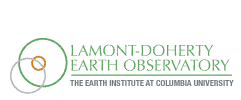NSF Program Announcement Research Activities MARGINS-NSF Awards Event Response Policy Data Policy Data Server Post-Doctoral Fellowships Related Websites
|
||||||||||||||||||||
The NARS-Baja project
Principal Investigators:
R. Clayton, Caltech
J. Ritsema, CaltechProject Summary
Section 5.2 of the MARGINS Science Plan (11/30/2000) states that signiocant progress in understanding the physical processes involved in the rupture of continental lithosphere will require a passive-source seismic array around the Gulf of California to gain insight into the seismicity as well as lithospheric and mantle structure of the Gulf of California region. Here, we request funding to deploy and operate such a seismic network. This network, NARS-Baja, will be comprised of 18 STS-II broadband ground motion sensors surrounding the entire Gulf of California. NARS-Baja will operate for at least 5 years, and involves a collaboration between the Caltech (Pasadena), CICESE (Mexico), and the University of Utrecht (The Netherlands). The NARS-Baja network shares many similarities with other passive-source deployment, commonly funded by the PASSCAL program. However, in some aspects NARS-Baja stands out. o NARS-Baja will be in operation for at least 5 years to ensure that we build a large seismic data base. o NARS-Baja bridges the gap in seismic stations between present-day broadband networks in California and the UNAM network in southernMexico. These networks, combined with NARS-Baja, yield an unprecedented 3000-km long array along the Pacioc margin of Mexico and California. o Immediate availability of NARS-Baja data promotes involvement by the entire research community. Site surveys are underway, and we plan to construct seismic stations, which house the instrumentation, in the Spring of 2001. We will deploy the seismic instruments in the Fall of 2001. We request funding from NSF-MARGINS to install the seismic stations and ford ata analyses at Caltech. A Dutch grant of $100,000 awarded to the University of Utrecht will cover oeldwork expenses. The NARS-Baja network, in combination with existing networks in the United States and Mexico, will provide new research opportunities for studying seismicity and earthquake faulting in the Gulf of California region and for constraining the structure of the crust and upper mantle in the Gulf of California region. Regional-scale models of the crust, lithosphere and astenosphere provide crucial constraints to geophysicists and geologists studying the evolution of continental break-up in the Gulf of California.
Full proposal text, with figures, as a PDF file (1.8 MB)


